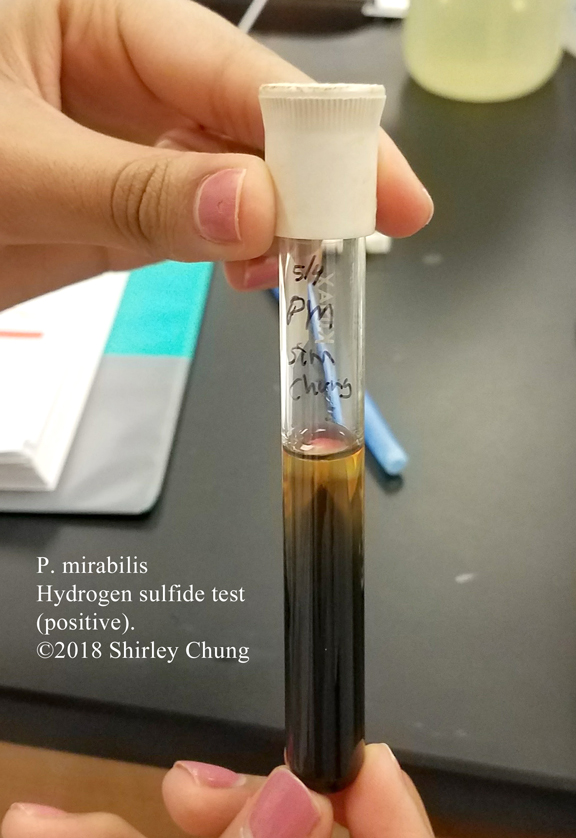Hydrogen sulfide producers may be categorized by their fermentation pathways.
Pathway 1. Hydrogen sulfide (g) is produced via hydrogenation (reduction) of sulfur in cysteine (amino acid) which is part of the medium. Cysteine desulfurase breaks cysteine into pyruvic acid, hydrogen sulfide gas, and ammonia.
Pathway 2. Hydrogen sulfide (g) is produced when thiosulfate reductase breaks down thiosulfate into sulfite and hydrogen sulfide gas.
A SIM medium containing peptone and sodium thiosulfate is used. A positive result is indicated by the ferrous sulfate trail/precipitate. Also, the motility of an organism may also be observed via the “blackened trail”.
Clinical significance. This test helps to separate and identify Shigella dysentariae (does not produce hydrogen sulfide) from Proteus or Salmonella.
Reference
Cappuccino, J. G., & Welsh, C. (2018). Microbiology: A laboratory manual.

